|
|
The cord blood industry came into existence in the early 1990’s with the formation of several cord blood banks in the U.S. and worldwide. It has been 40 years since it was first proposed that stem and progenitor cells were present in human cord blood.
Today, six pivotal themes are impacting the global cord blood and tissue industry, including:
1. Diversification of Services
Cord blood banks are rapidly introducing new types of stem cell storage. These services include the storage of:
- Umbilical cord tissue (Wharton’s Jelly)
- Placental blood and tissue
- Chorion
- Amnion
- Menstrual blood
- Dental pulp stem cells
- Adipose-tissue
Although cord blood storage emerged as a commercial service in the early 1990s, cord tissue storage didn’t emerge as a commercial service until 2008, when a Taiwanese company, HealthBanks Biotech Company Ltd., began offering the service making it the first company worldwide to do so.[1] HealthBaby, a Hong Kong based company subsequently launched the service in 2009. Hong Kong-based Cryolife, added the service in 2009 as well.
Within the U.S., Cord Blood Registry (CBR) was the first private company to begin offering cord tissue storage in July of 2010. Today, nearly all U.S. and most global cord blood banks offer cord tissue storage.
For placental banking, LifebankUSA initiated the service in the U.S. when it launched placental blood storage in 2006 and placental tissue storage in 2011. In September 2017, Americord Registry became the second U.S. cord blood bank to provide offering placental tissue banking. Internationally, a few dozen cord blood banks offer placental blood and tissue storage services.
Some cord blood banks have diversified into the storage of other types of stem cell derivatives, such as dental pulp stem cells. For example, DentCell is a dental pulp stem cell bank controlled by Cryoholdco, the largest cord blood banking operator in the Latin America.
Other cord blood banks have expanded into adipose-derived stem cell storage. For example, Bangkok Stem Cell is a Thailand-based cord blood bank that will extract a client’s mesenchymal stem cells (MSCs) from adipose tissue and store them for potential future use.
2. Pairing with Genetic Testing Services
Cord blood banks are increasing pairing cord blood banking with genetic testing and genomic sequencing services.
Examples of this trend include:
- Natera, a leader in genetic testing, launched its EverCord™ Cord Blood & Tissue Banking Service in March 2017. (In September 2019, Natera’s Evercord™ business was acquired by Cord Blood Registry, which was previously owned by GI Partners and is now owned by CooperSurgical.)
- ViaCord launched its Newborn Genetic Screening.
- LifeCell International, India’s largest cord blood bank, offers BabyShield, its preventive prenatal genetic screening and diagnostic testing services.
- Cordlife, Asia’s largest cord blood specialist, partnered with EONE-DIAGNOMICS Genome Center (EDGC), a Korean genetic analysis company, in order to pair cord blood services with genetic testing within East Asian markets.
- ESPERITE (Cryo-Save Group) and BGI Genomics (BGI) signed an agreement to offer Whole Genome Sequencing on a large scale. (Note: Cryo-Save ceased operations and entered the bankruptcy process in mid-2019.)
- The India subsidiary of Cordlife Group Limited, Cordlife Sciences India Pvt. Ltd, offers a non-invasive metabolic screening service known as MetaScreen, a service that can detect as many as 110 inborn errors of metabolism from urine samples.
- PlumCare, a DNA advisory service for families, partnered with Cordlife Group Limited to expand access to the first-ever lifetime DNA testing and advisory service.
3. Pairing with Fertility and Assisted Reproduction Services
The cord blood industry is also pairing cord blood and tissue banking with fertility and assisted reproduction services. This is because they are synergistic products that can be sold to the same set of clients. Logically, clients investing in reproductive assistance are pursuing a pregnancy and are financially qualified.
A good example of this trend was GI Partner’s acquisition of the largest cord blood bank in the U.S., Cord Blood Registry, for $530 million in June 2018. GI Partners, a private equity investment firm, simultaneously acquired CBR and California Cryobank (CCB), a leading donor sperm and egg bank. It merged the companies into a single entity that is a global leader in stem cell storage and reproductive tissue services.
In January 2020, Generate Life Sciences was formed as an “umbrella” brand to unite CBR, California Cryobank and other legacy brands that were being consolidated, such as Cord Blood America, FamilyCord, EverCord™, and related reproductive and genetic service brands.
By November 2021, Cooper Companies bought Generate Life Sciences® for $1.6 Billion, a transaction which included the largest cord blood bank in the U.S., CBR, as well as Generate’s other maternal and reproductive health brands.
Other examples of this trend include:
- While Cord Blood Registry (CBR) is now a Generate Life Sciences brand that is controlled by Cooper Companies, AMAG Pharmaceuticals and GI Partners previously controlled CBR
- For years, Donor Egg Bank, a company offering frozen eggs for use in childbirth, offered free processing of its clients’ newborn cord blood through its sister company, FamilyCord. Again, FamilyCord is now merged with CBR under the Generate Life Sciences brand.
4. Cord Blood Industry Consolidation
Cord blood industry consolidation is another major theme going on worldwide. Examples of this trend include the largest Canadian bank (Insception) merging with the largest Australian bank (Cell Care Australia Pty Ltd.).
Cryosite also bolstered CellCare’s dominance within the Australian market by selling its cord blood and tissue banking assets to them in June 2017
Within Latin America, Cryoholdco is buying up cord blood banks. Formed in 2015 as a holding company for cord blood banks, CryoHoldco has over over 275,000 stem cell units in storage, making it more than 5X larger than any other stem cell bank in Latin America.
Today, Cryoholdco controls:
- Cryo-Cell Mexico, BCU, BSCU and Dentcell in Mexico
- Two cord blood banks in Columbia
- BioCells in Argentina
- Criocord is Peru
Furthermore, Sanpower Group has emerged the largest cord blood banking operator in China and Southeast Asia after buying Global Cord Blood Corporation (GCBC) and Shandong Cord Blood Bank. It now controls over 1.2 million cord blood units within its network.
Another consolidation event in Asia was Cordlife Group’s acquisition of HealthBaby Hong Kong for US$7 million (S$9.3 million) in January 2018.
Similarly, most of the cord blood industry growth in Europe is now inorganic. The number of European stem cell banks has dropped by approximately one-third over the past ten years from 150 to less than 100. For years, the industry leaders in Europe were FamiCord PBKM (who has executed over a dozen M&A transactions), Vita34 (who has executed at least five acquisitions), Future Health Technologies Limited, and Cord Blood Center, respectively. These four companies control an estimated one-third of the European market share. Since May of 2021, Vita 34 AG and FamiCord PBKM have been merged into a single company with a combined inventory of 860,000 units in storage.
Stemlab, the largest stem cell bank in Portugal, also did three M&A deals, prior to being acquired by FamiCord for $16.5M in August 2018.
In the United States, the trend of cord blood industry consolidation is commonplace as well.
For example:
- Cooper Companies acquired Generate Life Sciences® for $1.6 Billion in November 2021, a transaction which included the largest cord blood bank in the U.S., CBR
- CBR acquired Natera’s Evercord™ cord blood and tissue banking business in September 2019
- Celularity also acquired CariCord in August 2018.
- Cryo-Cell International acquired the hybrid public-private cord blood bank CORD:USE for $14 million in June 2018.
- Celularity, Inc., an integrated therapeutics company, controls LifebankUSA, a private U.S. cord blood bank.
- In August 2018, CBR and FamilyCord merged into a single entity controlled by California Cryobank Life Sciences, known as Generate Life Sciences. From a consumer-facing perspective, FamilyCord no longer exists. Expectant parents can purchase cord blood and tissue storage services through CBR, which has maintained its brand identity.
- FamilyCord acquired Southern Cord in April 2016 and the assets of Cord Blood America, Inc. in February 2018.
- AlphaCord acquired LifeSource Cryobank in November 2015, its 5th acquisition of smaller banks
- FamilyCord acquired Vista Cord in April 2010
5. Cord Blood Banks as Integrated Therapeutic Companies
Cord blood banks are also investigating means of becoming integrated therapeutic companies.
In one interesting example, LifebankUSA became an asset of the augmented immunity and longevity company Celularity, Inc., which raised an astounding $250 million in investor financing in February 2018.
Similarly, LifeCell International, India’s largest cord blood bank, is built a facility in Jhajjar, Haryana, to manufacture mesenchymal stem cells (MSCs) and run clinical trials.
Similarly, most of the world’s prominent cord blood banks regularly partner with clinical trial organizers to provide cord blood units for preclinical and clinical research.
6. Focus on Cord Blood Cell Expansion
The cord blood banking industry is giving a great deal of attention to the pursuit of cord blood cell expansion. This is because the limited cell dose present within an unmanipulated cord blood unit restricts the efficacy of hematopoietic stem cell transplantation (HSCT) in adult patients.
Fortunately, there has been substantial progress in this area. Currently, the following companies have cord blood stem cell expansion products in clinical trials:
- Gamida Cell Ltd (Israel)
- Nohla Therapeutics (United States)
- Excellthera (Canada)
- Magenta Therapeutics (United States)
Perhaps the most important news around cord blood expansion was announced in April 2023 when Gamida Cell secured the world’s first U.S. FDA approval for an expanded cord blood cell therapy, Omisirge (formerly Omidubicel and NiCord).
The industry has never before achieved this level of validation for cord blood expansion technologies, making it an exciting time!
Below, technologies under development for cord blood expansion are described:
Omisirge – Gamida Cell (Jerusalem, Israel) is exploring cord blood stem cell expansion with Omisirge, a small molecule mediated approach that works via epigenetic regulation induced by nicotinamide. As mentioned, Omisirge has received breakthrough therapy designation, priority review, and orphan drug designation from the U.S. FDA. In April 2023, Gamida Cell secured FDA approval for the commercialization of Omisirge, making it the world’s first approval of an expanded cord blood cell therapy to be approved on the basis of a global, randomized Phase 3 clinical trial.
Notch-1 Ligand – Nohla Therapeutics (Seattle, Washington) is exploring cord blood stem cell expansion using the Notch-1 ligand.
StemRegenin-1 (SR1) – SR1 is an aryl hydrocarbon receptor antagonist that expands CD34+ cells. Research in this area has been sponsored by Novartis Pharmaceuticals and led by Dr. John Wagner of the University of Minnesota Medical School.
UM171 – First identified by Canadian researchers at the University of Montreal, UM171 is a pyrimido-[4,5-b]-indole derivative that improves self-renewal of human hematopoietic stem cells (HSCs).
Enforced Fucosylation – Ex vivo cord blood manipulation via enforced fucosylation appears to accelerates neutrophil and platelet engraftment after transplantation.
Dimethyl Prostaglandin E2 – This approach by Fate Therapeutics regulates the Wnt pathway in hematopoietic stem and progenitor cells (HSPCs), which has led the company to explore it for ex vivo expansion of umbilical cord blood stem cells.
MGTA-456 – MGTA-456 is a clinical-stage program in-licensed by Magenta Therapeutics from Novartis
Small Molecule Approach (Plasticell) – Plasticell has developed a small-molecule driven, GMP-compliant method of expanding hematopoietic stem cells from cord blood, bone marrow and peripheral blood. The therapy has been part-funded by multiple programme grants from Innovate UK and developed in collaboration with NHS Blood and Transplant, the University of Oxford and the Cell and Gene Therapy Catapult.
To learn more about this rapidly evolving market, view the “Global Cord Blood & Tissue Banking Industry Report – Market Size, Segmentation, & Forecasts, 2024.”
Footnote:
[1] HealthBanks Biotech was acquired by Cordlife Group Ltd. in January 2018.
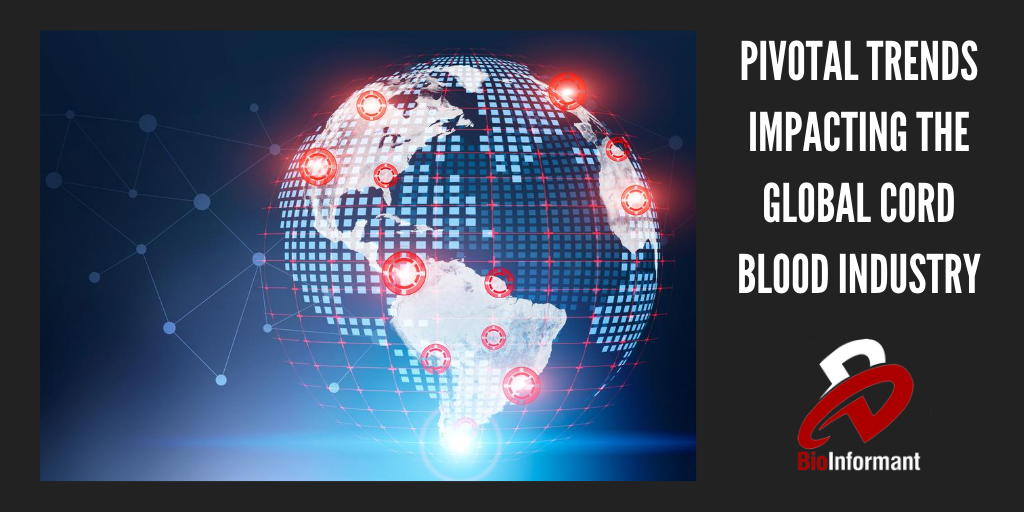
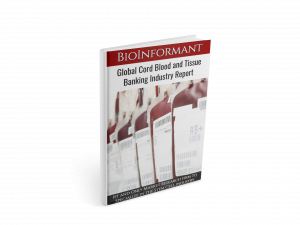




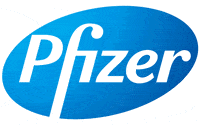




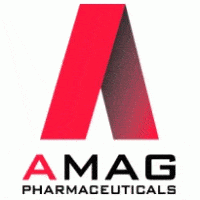




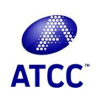


Tell Us What You Think!